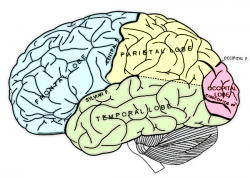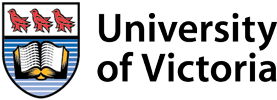The Most Amazing Structure on Earth: Main Idea & Comprehension Questions
Read the story and answer the questions.
Click on the box beside the correct answer.
The Most Amazing Structure on Earth
 There are people who say the most amazing structure on earth is the human brain. It is so complex that it took about 700 million years to develop. Humans started out as wormlike creatures that used one end of the body to move forward. Ever so slowly, a bunch of nerves began developing at that one end — the head. These nerves helped the creature to sense light, food and danger. Eventually, this bunch of nerves became the creature’s brain. To carry messages from the brain to other parts of the body, the creature grew a spinal cord. Later, the creature became a fish with eyes, ears and a nose that could send the brain information about sights, sounds and smells.
There are people who say the most amazing structure on earth is the human brain. It is so complex that it took about 700 million years to develop. Humans started out as wormlike creatures that used one end of the body to move forward. Ever so slowly, a bunch of nerves began developing at that one end — the head. These nerves helped the creature to sense light, food and danger. Eventually, this bunch of nerves became the creature’s brain. To carry messages from the brain to other parts of the body, the creature grew a spinal cord. Later, the creature became a fish with eyes, ears and a nose that could send the brain information about sights, sounds and smells.More time passed, and the fish grew arms and legs so it could move about on land. For this, it needed a larger and more complex brain. It became an ape-like creature, and the parts of the brain used for seeing images and being social grew much stronger. Finally, the ape-like creature became human, with a brain that was capable of reason, emotion, creativity, memory and the ability to judge right from wrong.
The human brain is very mysterious. Many questions about the brain have not yet been answered. For example, why do we need to sleep or why do we dream? There is a lot about the brain that we do not yet understand. Believe it or not, people used to think of the brain as useless stuffing. Of course, we now know the brain is our control centre. The surface of the brain is called the cerebral cortex. It is the part of the brain that makes us intelligent, and it consists of four parts called lobes. The front lobe is where much of our thinking and feeling happens. The top lobe processes information which is coming from parts of our bodies, such as our skin and muscles. The side lobe plays an important role in hearing, speech and long-term memories while the back lobe processes images from our eyes.
Which do you think is more powerful: your brain or a supercomputer? You might be surprised to learn that the world’s best supercomputer is only about as powerful as half a mouse brain! Your brain is packed with 100 billion brain cells called neurons. They send information to your body telling it what to do, and they receive information from each of your senses, what you see, feel, taste, hear and touch. All of this information travels to and from parts of your body along your spinal cord, which is like a highway found down the centre of your back. As the information travels from neuron to neuron, pathways are created. When you think about or practice something again and again, those pathways get stronger. That’s how the brain learns and remembers. Actually, you were born with most of the neurons you have now, but when you were a baby, you didn’t have many pathways to connect them. As an adult, you now have more than 125 trillion connections between your neurons. No computer on earth can compete with the speed of your brain and how much information it can hold.
Credits:
Story by Shantel Ivits at BC Open Textbooks
Adapted under Creative Commons license
Adaptations and exercises by Richard Carrington, English Language Centre
Audio version performed by Cam Culham, English Language Centre
Public Domain images from WPClipart
Story by Shantel Ivits at BC Open Textbooks
Adapted under Creative Commons license
Adaptations and exercises by Richard Carrington, English Language Centre
Audio version performed by Cam Culham, English Language Centre
Public Domain images from WPClipart

